Date
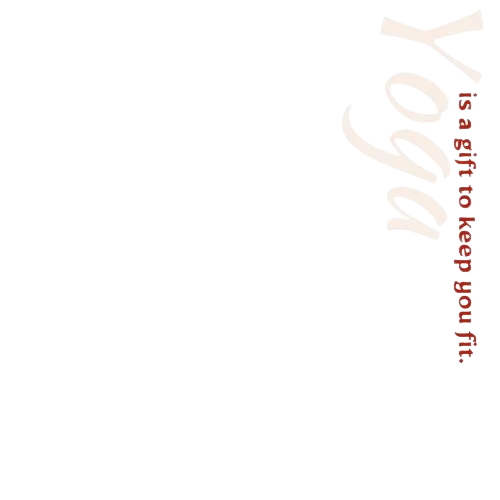
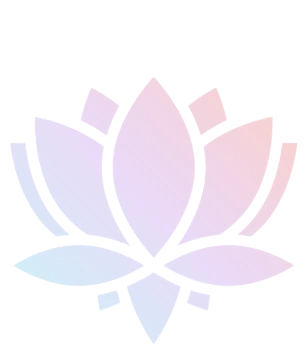
| Course Name | 500 Hour Yoga Teacher Training |
| Level | Master |
| Yoga Style | Multi-style (Hatha, Ashtanga, Iyengar) |
| Duration | 42 Days |
| Module | Residential with Meals |
| Language of Instruction | English |
| Certification | RYT 500 Hour by Yoga Alliance |
| Venue | Aatm Yogashala |
| Location | Yoga Village, Swargashram, Rishikesh |
| Course Fee | (Shared Room - US $1849) - (Private Room - US $2199) |
FREE taxi pick-up (from Dehradun (DED) Airport)
Accommodation with attached washroom
Yogic Food (100% Vegetarian Meals)
Special Dietary (Raw, Vegan, Gluten-free)
24*7 Free Wi-Fi
2 times Tea a day (Indian/Ayurvedic/Herbal).
Teaching Materials and Modules
Certificate: RYT 500 Hour by Yoga Alliance
Ayurvedic Panchakarma & Treatment
Air-conditioner (On Additional Charges)
Visa fee/ Air fare
Taxi pick-up from Delhi and Haridwar
Any students who have completed a 500-hour yoga training course can apply to obtain a 300 Hour Yoga TTC, a recognized and internationally recognized yoga teacher course and designation. You can build your knowledge of yoga up to such a level at Aatm Yogashala that you will have a chance to teach yoga as your profession. Based on their eligibility, our graduates may apply with Yoga Alliance to be registered Yoga teachers, including RYT 500 and RYT 500.
EvaluationComprehensive analysis of 500-hour Yoga teacher training in Aatm Yogashala, India, according to the criteria below:
Techniques, Training and Practice
Asana | Assignment | Pranayama | Meditation
Anatomy & Physiology
Yoga Humanities
History | Philosophy | Ethics
Professional Essentials
Teaching Methodology | Professional Development | Practicum
Asana is the beginning move of yoga. Also known as the Seated pose, the other asanas are performed with the help of it. It is practised in every form of yoga, i.e., Hatha, Ashtanga, Vinyasa & Iyengar. It includes the Methodology and practice of Asana. You should practice Yogic postures daily and dedicate no less than 3-4 hours to this practice. The various kinds of yogic poses are introduced systematically by raising the level of difficulty at a slow pace. Once your simple practice of Asana is complete, then the students face asana flows, adjustments, and awareness of subtle aspects.
Breathing practice or some method of breath control is called pranayama. The meaning of Prana is Life Energy, so is the meaning of Yama Control, so is the meaning of breath or life energy control. It includes Physiology, Methodology, and Practicum. Pranayama is the act of supreme control over breathing or vital energy in the body. In this subject, students are taught how to regulate their breath and to work with vital energy in the central part of the body. Our students need to be professionally sound in Yoga, and this is an important subject for them.
Stated plainly, Mudra means a sign language/gesture to convey the state of mind by finger movement. It awakens the inner and sleeping energy of the body of the yogi. A few of these yoga mudras are Jnana/Gyan Mudra, Chinmaya Mudra, Vayu Mudra, Agni Mudra, Varun Mudra, Prana Mudra, and Surya Mudra.
Bandha is the English word for to hold, tighten, bind, or lock. Doing it over a long time gets the prana energy to accumulate somewhere in the body. It also, by means of Prana, prevents Kundalini awakening.
A meditative state is a calm state of mental condition. It is a mental activity including relaxation, concentration, and awareness. This is the exercise performed usually in a sitting position and with closed eyes. It stands as a valuable topic for our students to prepare them professionally as they prepare their future as Yogics.
Mantra Chanting- This is a spiritual practice. However, in addition to this, it is strongly suggested as a way of becoming emotionally and mentally balanced. You relax as you say the mantras and get into a state of happiness.
The yoga philosophy is also dualist. The aim of Yoga Darshan or Philosophy is to guide one on the route one can take and enjoy the entire life, i.e., achieve salvation. It discusses the fundamental Yoga Philosophy, history, and concepts of yoga. It is a blend of the old Yogic and the new way of life.
Yoga is concerned with the body and body parts. The structure and functionality of the body need to be known before one performs a specific act of yoga asana. It covers Anatomy. Aspects of physiology and anatomy are learned and explained in incremental ways to enhance the efficiency of classroom explanations, asana corrections, and cues.
Ayurveda is the ancient medicinal science that originated many years ago in India. India has numerous herbs and natural remedies; these not only heal the body but also protect the body against any possible future diseases or illnesses.
Shatkarma is a cleansing process that involves 6 yogic purity kriyas (or actions) as described in ancient books about yoga. Its other name is Shatkriya. With these six actions, the whole body of a human being is cleansed. All six kriyas (Dhauti, Basti, Neti, Trataka, Nauli, and Kapalbhati) are described in detail in the class of Shatkarma. The Shatkarma is the sanctification of the body performed in the early mornings related to the practices of different Asanas.
And yoga is concerned with the body and body parts. Before practicing a specific yoga asana, one must be aware of how the body is structured and how it functions. It covers Anatomy. Examples of physiology and anatomy, and learning and explanation of some aspects of physiology and anatomy, to become more efficient in classroom explanation. What you can learn is what matters, and how you can learn is what matters too, and in a teaching training course, how to explain what you learn is also what matters. Teaching Methodology is a significant course because, in general, it will make you a successful yoga teacher.
The type of Yoga Alignment and Adjustment is very significant in correcting the posture, and also, the Alignment will give you the correct understanding of the pose or asana.
Yoga Therapy is the prevention of a disease by using yogic actions. Yoga therapy aims to treat various diseases through all elements of yoga, such as asanas and pranayama. Each of the processes, in a certain way, influences the subtle to gross functions of the body.
A 500-hour Yoga Teacher Training Course at Atam Yogashala has a strict schedule as per the Yoga Alliance regulations. There are almost 6-7 hours of training time allocated to some form of yoga daily. The training might seem intensive, but it is mentoring.
| TIME | ACTIVITY |
|---|---|
| 06:00 - 06:45 am | Pranayama |
| 07:00 - 08:30 am | Hatha Yoga Asana |
| 08:30 - 09:45 am | Breakfast & Rest |
| 10:00 - 11:00 am | Philosophy |
| 11:15 am - 12:15 pm | Ayurveda & Anatomy |
| 12:30 - 01:30 pm | Adjustment-Alignment |
| 01:30 - 02:00 pm | Lunch |
| 04:00 - 05:30 pm | Ashtanga-Vinyasa Asana |
| 05:30 - 06:00 pm | Tea & Relax |
| 06:00 - 07:00 pm | Meditation & Mantra Chanting |
| 07:00 - 07:30 pm | Self-study |
| 07:30 - 08:00 pm | Dinner |
Opening Hawan (Fire Ceremony)
Parmarth Niketan Ashram
Kunjapuri/Balkumari Temple
Yoga by the Ganges
Meditation Cave Tour (Mouni/Vashishtha)
13th floors Bhootnath Temple (Sunset view)
Classical Music Concert (with Gurukul students)
Dance Class (Bollywood, Classical)
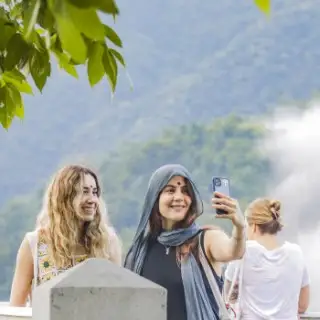
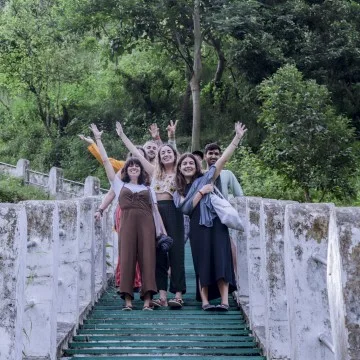
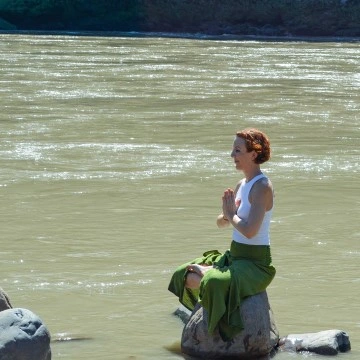
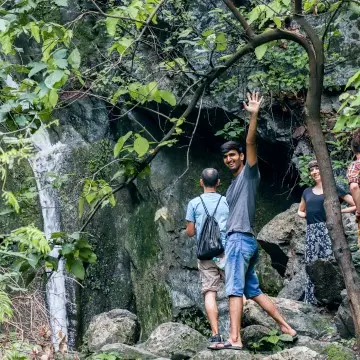
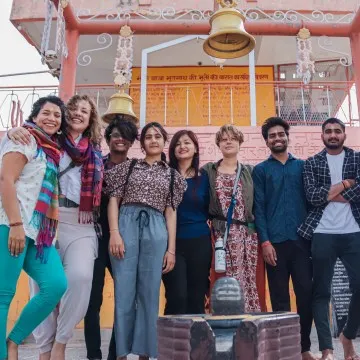
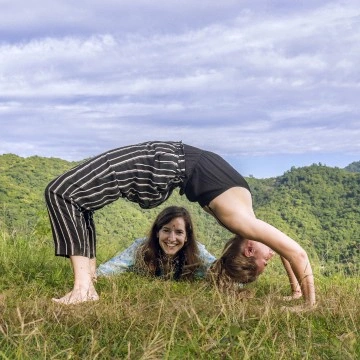
Physical condition is not the only thing that is influenced by our food, but our feelings, as well as our inner state of mind. Yoga does not micro-disperse the food into proteins, carbohydrates, or fats, but according to their influence on the body and mind, the food is split into three groups: Sattva, Rajas, and Tamas.
Aatm Yogashala is a sparkling combination of both the cultures and the Western, i.e., modern facilities to render the students the home touch in their home away and a sufficient environment in which they can learn yoga. Aatm gives their students 2 clean, neat, and spacious Yoga Theatres in the Harbour of Nature. Since we are committed to providing our students the very best setting of learning aura, our yoga halls are located adjacent to the lap of nature on the bank of the sacred Ganga river, a serene and ideal setting that is good for meditation and the spiritual part of yoga, as well as the mood that suits a healthy mind and body.
Atm Yoga sessions are easy to establish and often take between 60 and 90 minutes in one sitting. It is between a warm-up period and practice, and between relaxation and the desire to obtain the highest benefits that the duration allows, without being in a hurry for the students. Weekly attendance helps to bring visible gains to flexibility and strength, as well as the level of mental composure.
You should wear soft dresses and make sure you keep your body hydrated before an Aatm Yoga procedure, and in case of hunger, you need to take a light meal. An easy time is best achieved by clearing your mind, turning up on time, and bringing a yoga mat or some other essential equipment. When you are ready both physically and mentally, you improve your focus, you are more likely to practice safely, and to enjoy the complete benefits of the session.
The Aatm Yoga course also involves guided asanas, pranayama (breathing exercises), meditation, and relaxation. It is also described as posture adjustment, stress and wellness tips. The course will complement all of them, having physical, mental, and spiritual practices to guarantee the above: a healthy, flexible, mindful, and balanced way of life.
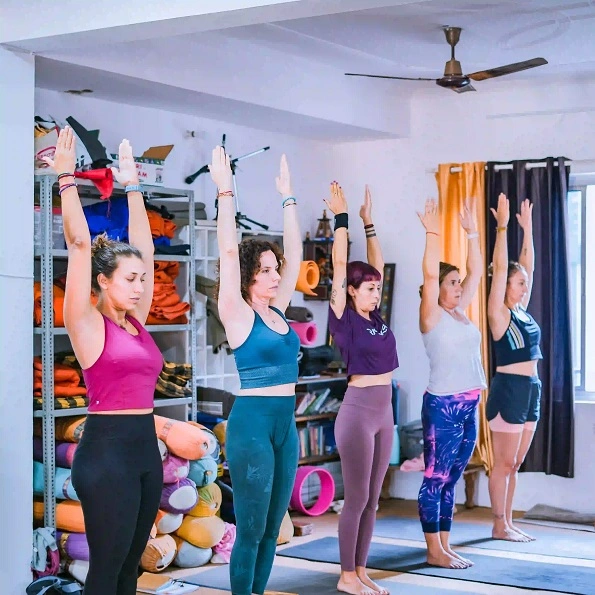
100 Hour Yoga TTC is a gateway Yoga Alliance. This is a 11 days course for becoming a eligible for RYT 200 Hours Yoga TTC by Aatm Yogashala.
Course Highlights:
Course Fees:
200 Hour Yoga TTC is a gateway to Yoga Alliance. This is a 27 days course for becoming a certified teacher with RYT 200 Hours by Aatm Yogashala in compliance with Yoga Alliance.
Course Highlights:
Course Fees: